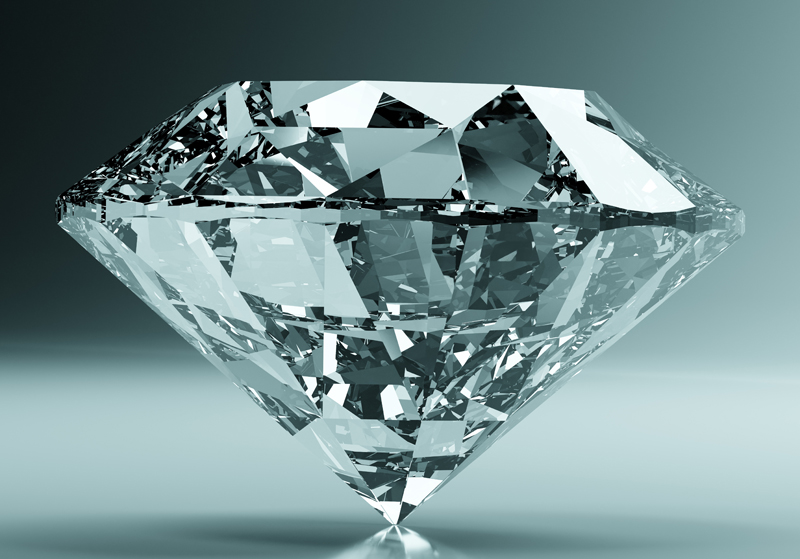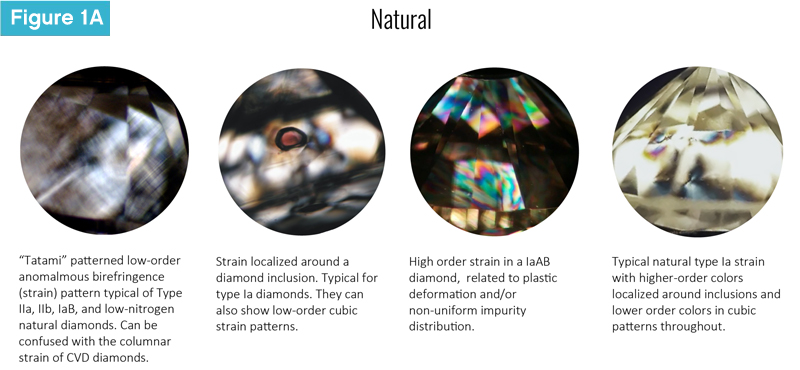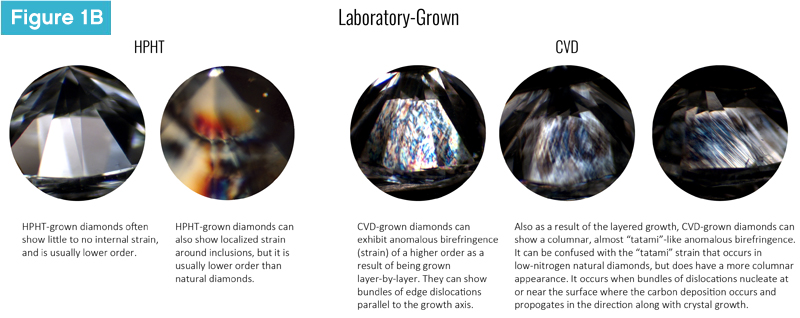By Alethea Inns
 If one thing was made clear at last year’s JCK show, it was laboratory-grown diamonds are, yet again, a hot topic in the jewellery industry. Now more than ever, it is important for retailers to be able to communicate clearly with customers the key differences between laboratory-grown diamonds and their mined counterparts.
If one thing was made clear at last year’s JCK show, it was laboratory-grown diamonds are, yet again, a hot topic in the jewellery industry. Now more than ever, it is important for retailers to be able to communicate clearly with customers the key differences between laboratory-grown diamonds and their mined counterparts.
As consumer awareness of laboratory-grown diamonds grows, and retail jewellers increasingly offer them as a purchase option, it is necessary to remain informed on how to disclose appropriately, as well as how to address any customer questions.
Both laboratory-grown and natural diamonds fascinate gemmologists and scientists. Laboratory-grown options are a feat of human ingenuity and scientific accomplishment, while natural diamonds are a feat of nature, brought to beauty by the humans who have sought them for centuries. Each offer something different! It is necessary for us to understand the ways in which these stones are the same and how they differ to help us explain the value of each to curious and increasingly informed consumers.
1) Definition (i.e. what they are)
Similarities
The mineralogical definition of a diamond is “carbon crystallized in the cubic crystal system.”
In this way, laboratory-grown and natural diamonds are the same. These similarities translate to their properties, which we will look at next.
Differences
At the subatomic level, there are essential differences diamond scientists rely on which allow us to separate diamonds by growth origin type (i.e. natural or laboratory-grown). These differences will be explored in the ‘Detection’ section below.

2) Properties (i.e. how they are described)
Similarities
Following mineralogical definition, because both laboratory-grown and natural diamonds are the same definite chemical composition with the same ordered atomic structures (cubic), their optical, physical, and chemical properties are the same.
Optical
Optically, the two varieties have the same brightness (brilliance), dispersion (fire), scintillation (sparkle), and lustre if their cut and 4Cs are comparable. This is because both have the same refractive index and transparency.
Refractive index indicates how much the speed of light is reduced when travelling through a diamond. The higher the refractive index of a material, the more it slows down light. The more light is slowed down when travelling through a material, the more it must change direction and bounce around internally (i.e. within the diamond) before returning to the eye. This is what gives diamond its characteristic optical properties.
It is the unique structure of carbon atoms within a diamond which give it highly refractive properties. The way a diamond is arranged and the number of atoms per unit volume gives it a high refractive index, which slows down light. Both laboratory-grown and natural diamonds are 99.95 per cent carbon in the cubic crystal system, which means they both have identical optical properties when it comes to interaction with light.
Physical
Like its optical properties, a diamond’s physical properties are a result of the structure of its internal carbon atoms and electrons. Because the outermost shell of each carbon atom has four electrons shared with four other carbon atoms (known as a covalent bond, which has high bond dissociation energy—that is, the amount of energy required to break the particular bond in a mole of molecules), the atoms form extremely strong chemical bonds, resulting in a rigid, strong crystal. This is why diamond has a hardness of 10 on the Mohs scale, and also what gives it a high relative density (what gemmologists call ‘specific gravity’).
Chemical
At room temperature, both laboratory-grown and natural diamonds do not react with any chemical reagents, including strong acids and bases. This is, again, related to their chemical composition and crystal structure. (These similarities are also why a diamond tester will not distinguish the two.)
Differences
To the unaided eye, there are no differences between laboratory-grown and natural diamonds. This is a function of the properties themselves not being able to be measured by the naked eye. Through standard gemmological testing, however, one may notice a difference in strain patterning, which is observed using cross-polarized light (Figures 1A, 1B).
Strain occurs when, during formation, a diamond’s crystal experiences a physical stress whereby external forces and/or deformation modifies a crystal’s normally isotropic (i.e. cubic) properties.
Natural diamonds are usually subject to varied stress during their million-to-billion-year formation and through their process of transport to the Earth’s surface. Because of natural diamonds’ non-uniform conditions of growth, they typically exhibit a few different types of strain based on their formation, including strain around inclusions, dislocations created during crystal growth, mechanical damage, plastic deformation (like the cross-hatched ‘Tatami’ growth in Type IIa diamonds), or differences in concentrations of impurities.
While the causes of strain are similar for diamonds created using high pressure, high temperature (HPHT) methods, they present differently. HPHT diamonds are grown in a uniform high-pressure field, which means they will often have little or no low-order (desaturated) strain.
Diamonds grown using chemical vapour disposition (CVD), however, are different. Due to their layered, start/stop growth, they show structural strain, which can be observed at the different growth layers and interfaces. Additionally, CVD-grown diamonds often have a higher-order (i.e. more brightly coloured) columnar strain pattern (banded or parallel) due to their growth.
So, does that mean one can use strain to differentiate laboratory-grown and natural diamonds? In short, unless you have seen several thousand diamonds under crossed polars, no. Even in those circumstances, the difference would not be definitive without additional confirmation tests. Strain patterning can overlap between laboratory-grown and natural diamonds, so using it as a singular, definitive confirmation test of growth origin is not recommended.






